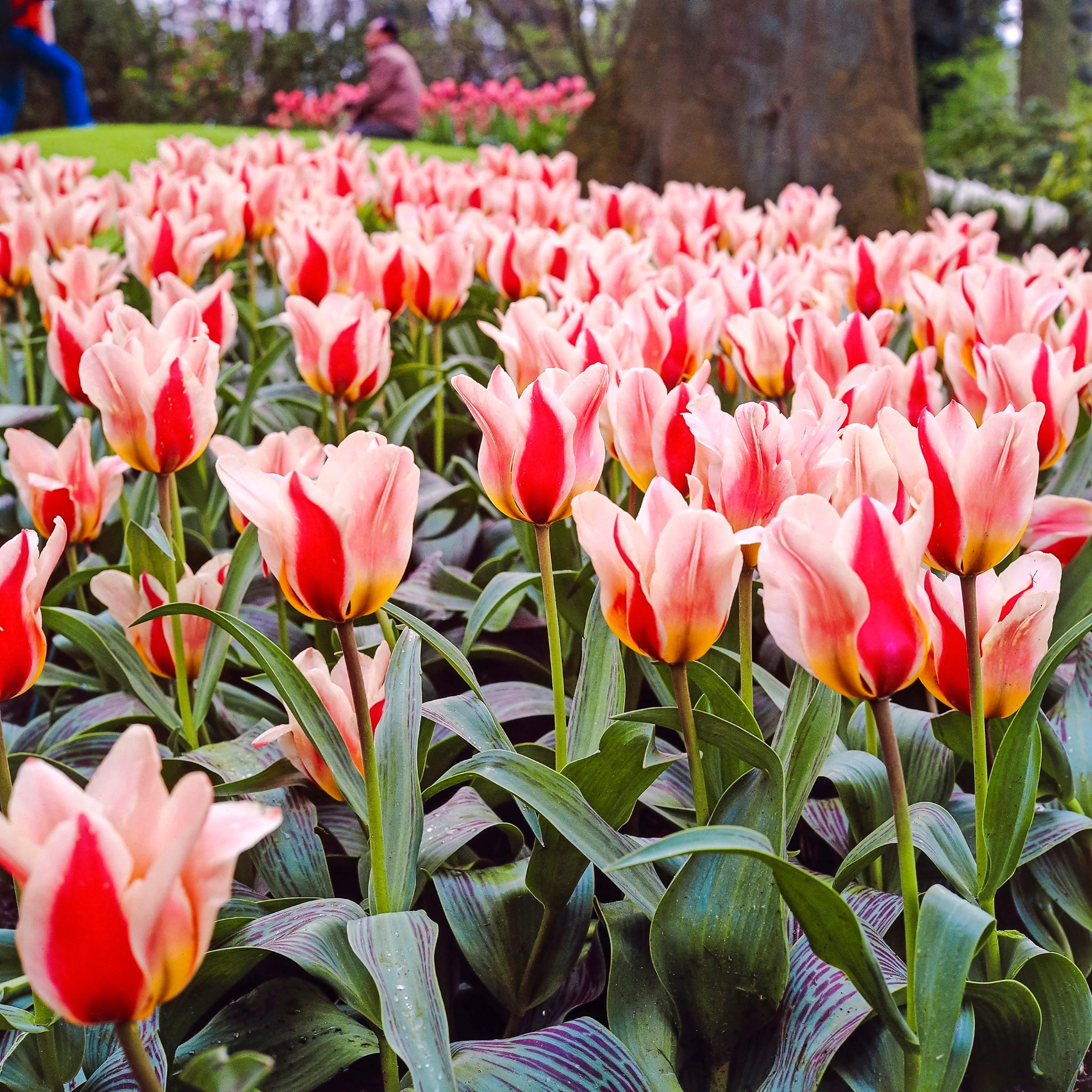Plant these types of tulips in fall for an explosion of color when spring arrives. They'll look spectacular arranged in a bouquet or in a vase.
Our editors and experts handpick every product we feature. We may earn a commission from your purchases.


Plant these types of tulips in fall for an explosion of color when spring arrives. They'll look spectacular arranged in a bouquet or in a vase.
Our editors and experts handpick every product we feature. We may earn a commission from your purchases.

Type of tulip: Greigii
Bloom time: Early spring
Low-growing greigii tulips are native to Central Asia. Their striped, wavy leaves are as big an attraction as their cup-shaped flowers, which splay wide open in sun and then close up at night. Some gardeners find greigii to be more long-lived compared to other types of tulips.
Why we love it: Mary Ann is a head turner, with magenta and white petals that mature to pale pink and raspberry. Blue-gray-green leaves are delicately striped with burgundy.
Check out the best places to buy flower bulbs online.

Type of tulip: Double (peony flowered)
Bloom time: Late spring
Double types of tulips—both early and late—present extra flower power. The blooms grow up to 4 inches across, and many offer interesting scents.
Why we love it: La Belle Epoque has a fresh color palette. Dusky rose, peach, caramel and butterscotch tones ripple quietly throughout this beauty, which pales over time.

Type of tulip: Double (peony flowered)
Bloom time: Late spring
Double early types of tulips light up any spring landscape with fresh color but are subject to whims of rain and wind. The double late tulips extend the growing season with longer-lasting bloom power. Double tulips, both early and late, often resemble peonies.
Why we love it: Midnight Magic, a double late type of tulip, offers fragrance from its deeply saturated red to burgundy petals. It works well with yellow, white or orange tulips in the garden or a vase.
Check out the ultimate guide to planting spring bulbs.

Type of tulip: Triumph
Bloom time: Midspring
Triumph tulips bridge the bloom season between single early tulips and Darwins. Best considered as annuals, triumphs are the largest type of tulips, blooming in a wide variety of colors.
Why we love it: Silky pink petals are enhanced with a creamy base on the outside and darker pink on the inside. But the leaves, rimmed with ivory to palest pink, really set New Design apart.
These pictures of tulips will make you dream of spring.

Type of tulip: Parrot
Bloom time: Late spring
Parrot tulips, as their name implies, are puckered, fringed, scalloped and feathered—a bit like the plumes of the flamboyant bird.
Why we love it: Estella Rijnveld may be an heirloom but it’s still exciting. The flurry of red-and-white petals wave in the breeze like a cheerleader’s pompom on a stem.
Check out 10 of the best daffodil bulbs to plant this fall.

Type of tulip: Lily flowered
Bloom time: Mid-to-late spring
Lily-flowered tulips grow with sharply pointed petals similar to the style favored in the Ottoman Empire, adding an elegant touch. Even when closed, the vase-shaped buds look exotic.
Why we love it: The rich purple flair of Yume no Murasaki opens to show a white base, especially on sunny days.
Critters eating your tulip bulbs? Try these deer-resistant bulbs for spring blooms.

Type of tulip: Viridiflora
Bloom time: Late spring
Viridifloras—from the Latin words for green and flower—boast vivid green stripes along the centers of their petals and rank among the longest-lasting tulips, blooming up to three weeks.
Why we love it: The unusual coloration of Artist, one of the first viridiflora tulips, shows ingenious elegance during the life of the bloom, and transforms from bright orange with green and purple markings to peach, olive and lavender.
Learn 6 fascinating tulip facts you don’t know.

Type of tulip: Fosteriana
Bloom time: Early spring
Fosterianas, also called emperor tulips, are descendants of wild tulips from Central Asia. And some of their tenacity remains in these early-spring favorites that reliably return year after year.
Why we love it: Exotic Emperor, with its elegant semi-double creamy blooms, becomes paler over time, enhanced by licks of yellow and green on its exterior petals. Bonus: Exotic Emperor does well in pots.
Learn how to keep squirrels from digging up flower pots and bulbs.

Type of tulip: Darwin hybrid
Bloom time: Midspring
Darwin hybrid types of tulips are big, bold and brassy. Introduced in the U.S. in the 1950s, they are a cross between single late tulips and early fosteriana tulips, with large, sturdy flowers that rebloom several years after their first big burst.
Why we love it: Banja Lukas shine with gold petals streaked with orange-crimson. Plant them with solid purple tulips to pair in a vase.
Love daffodils? Experts explain why your daffodils may not bloom in the spring.

Type of tulip: Species
Bloom time: Midspring
Species tulips form a huge group of wild types from which all modern tulips were developed. The small, tough plants are ideal for rock gardens or places with excellent drainage.
Why we love it: With unusual rosy lilac petals and a deep yellow center that glows like a searchlight, Lilac Wonder is a true charmer, reaching only 6 to 7 inches tall.
Backyard tip: Tulips originated in dry mountain regions. To encourage rebloom, snap off the old blooms when spent but leave the stem and foliage until completely dried. All types of tulips require full sun and good soil drainage. Avoid planting in irrigated garden areas.
Next, find out why you’ll fall in love with White Honeymoon tulips.